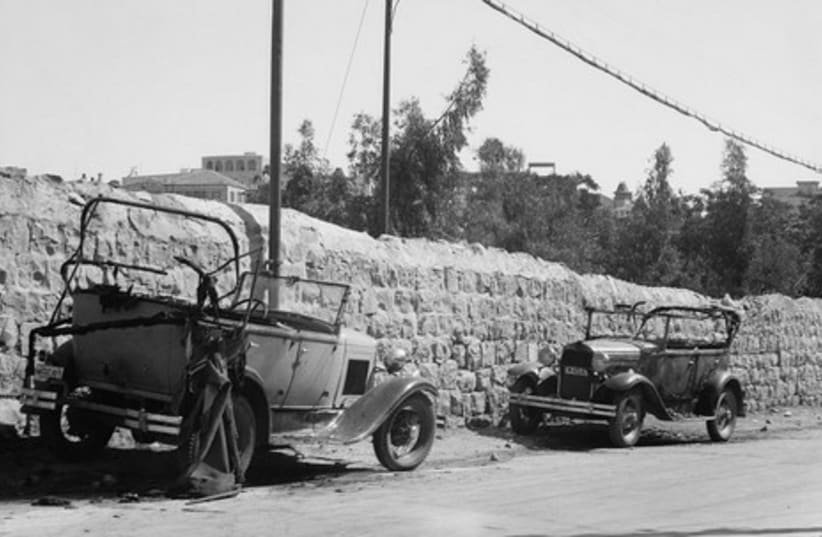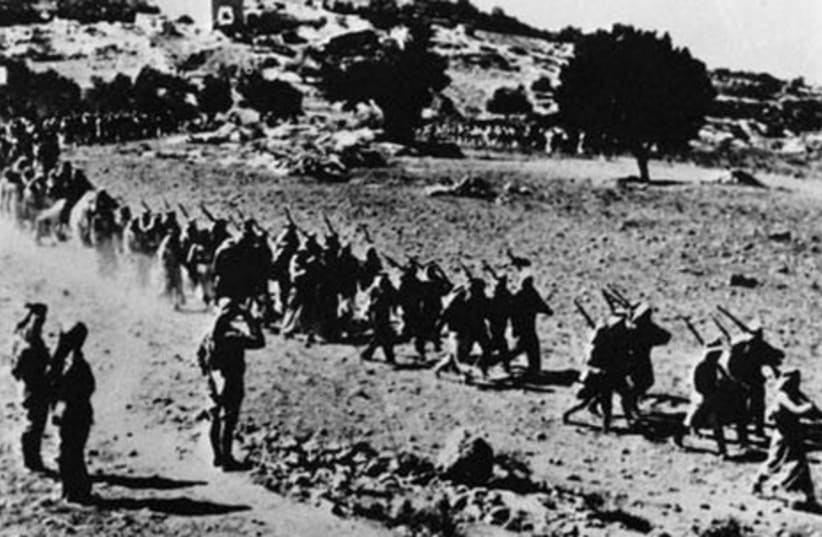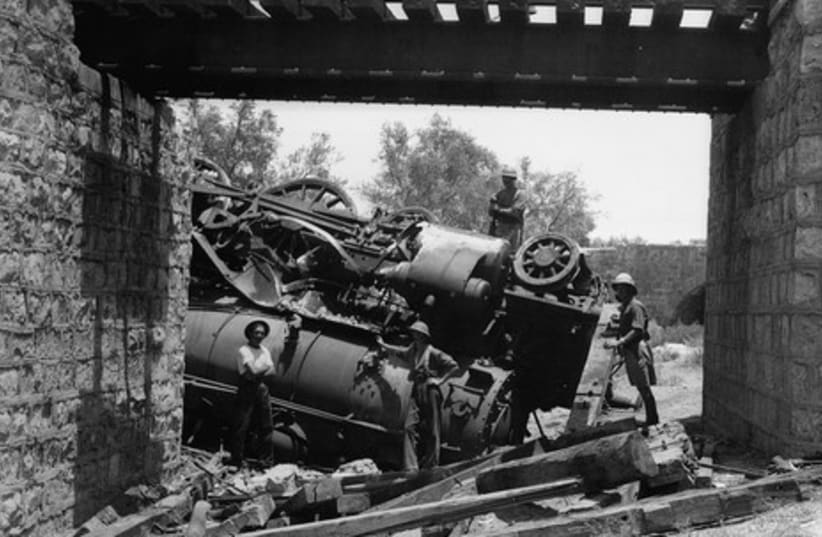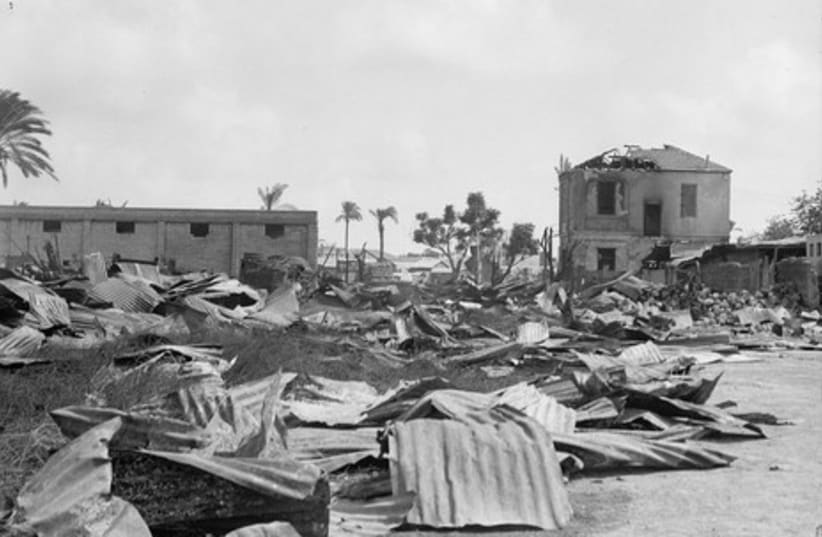





The Arab revolt in Palestine (1936-1939) was a frequent subject for the American Colony photographers. They recorded on film the Arab attacks on Jews, British soldiers, and strategic targets such as the railroad network in Palestine. They also photographed the sometimes draconian British response. The Arab general strike in April 1936 escalated into widespread attacks by gangs and militias.
By August, "volunteer" Arab guerrilla forces from Syria had invaded. The annual British Mandate report for 1936 revealed that one of the guerrilla leaders "was Fawzi ed Din el Kauwakji, a Syrian who had achieved notoriety in Syria in the Druze revolt of 1925-26. This person subsequently proclaimed himself generalissimo of the rebel forces, and 'communiqués' and 'proclamations' purporting to have emanated from him were circulated in the country." [The photo of Kauwakji is the only photo not from the Library of Congress collection.]The consequences of the Arab revolt, labor strikes and attacks were numerous: -The British instituted the White Paper in 1939 limiting Jewish immigration into Palestine - precisely when hundreds of thousands of Jews were trying to flee Nazi Europe.-It forced the Jews of Palestine to establish their own militias, the precursors of the Israel Defense Forces.-The revolt actually fractured Palestine's Arab society, and many of the Arab casualties were caused by competing Arab gangs and clans.-With strategic facilities subject to the Arab strike, the Jews of Palestine established their own port, key industries, and airfields.-The British struck back against the Arab militias and gangs with force and sometimes brutality. Aircraft were used to bomb and strafe Arab forces.More photos can be viewed at http://www.israeldailypicture.com